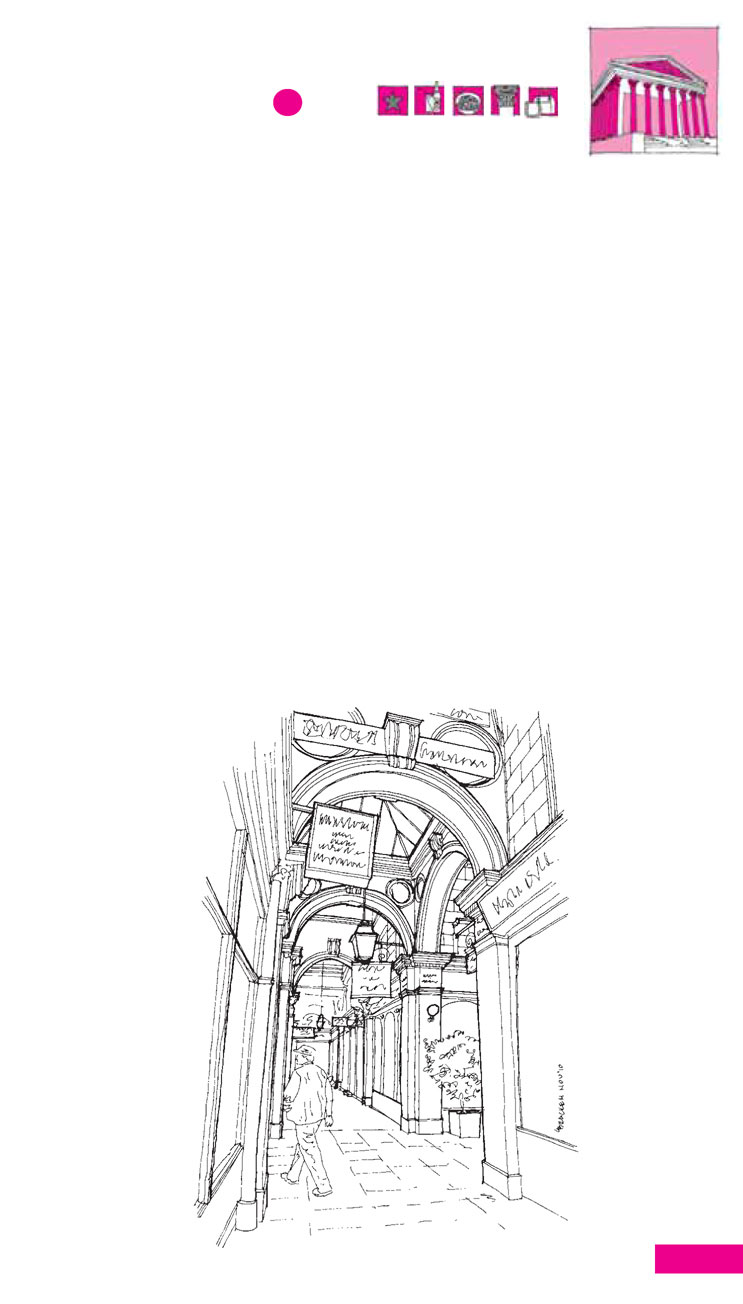9
Continue along rue Vivienne and you will come to one of the entrances to Galerie Vivienne, on your left at No. 6. This is one of a number of early 19th-century shopping arcades (also
known as passages or galeries) which are located between the Boulevard Montmartre and the rue St-Marc. They were a brilliant innovation when first constructed as they allowed shoppers to browse in an environment free of traffic and protected from the elements. They were basically the precursor to the modern-day shopping centre.
These passages were a mecca not only for shoppers but also architects from all over Europe who came to marvel at their ingenuity, including Mengoni, who went on to build the Gallery Victor-Emmanuel II in Milan. Improvements made to the city by Baron Haussmann, such as pavements and sewers, meant that the passages lost some of their appeal from the 1860s onwards and fell into disuse. Some were revitalised in the 1970s and are home to an eclectic mix of shops. One of the most charming of them is the Galerie Vivienne (entrances at No. 6 rue Vivienne, No. 5 rue de la Banque and No. 4 rue des Petits Champs). It was constructed in 1826 from a design by Delannoy and contains mosaic floors (by Italian artist Faccina), iron-and-glass roofs, some interesting shops and an excellent tearoom.
The success of Galerie Vivienne led its developers to purchase the neighbouring 17th-century hôtel particulier which they demolished to make a second arcade. The Galerie Colbert never achieved the success of
Galerie Vivienne
Opéra
187

